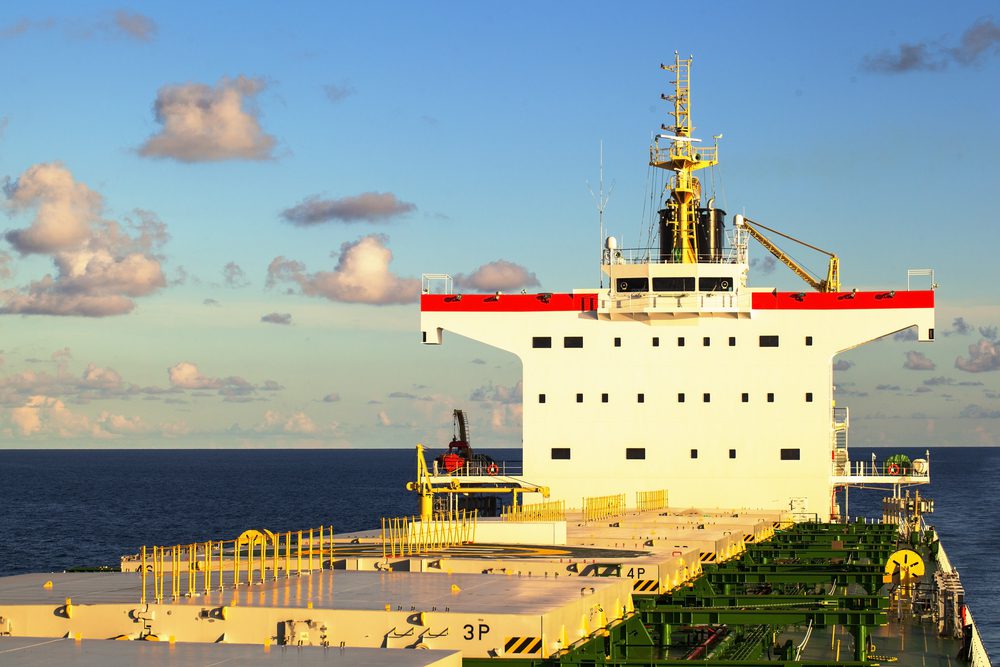Iranian Ship Linked to Houthi Attacks Heads Home Amid Tensions
(Bloomberg) — An Iranian ship that’s been linked to Houthi attacks in the Red Sea is returning home, removing a prominent asset in the area as the Islamic Republic braces...


File photo (c) Shutterstock/Lukasz Z
By Bill Lehane
(Bloomberg) — How bad is the market for shipping commodities across the world’s oceans? Consider that more than 100 vessels will probably be scrapped this year — a record — and daily earnings for the industry will still tumble.
Having predicted as recently as February that shipping rates this year would jump, forecasters are turning increasingly bearish as China’s coal imports plunge and its iron ore buying expands at the slowest pace on record. The Asian country’s economy, which is the second-largest after the U.S., will expand the least in a generation in 2015, estimates compiled by Bloomberg show.
Against that backdrop, owners will demolish the equivalent of about 6 percent of all Capesizevessels this year, according to GMS Inc., a Cumberland, Maryland-based company that purchases obsolete carriers. Even so, earnings per vessel will still slump by about 20 percent this year based on a Bloomberg survey of 10 shipping analysts.
“You can’t make the market good just by scrapping, that’s only going to protect the downside,” Eirik Haavaldsen, a shipping equities analyst at Pareto Securities AS in Oslo, said by phone May 13. “Coal is collapsing and iron ore is just not growing.”
Crew Costs
The drop in demand for commodities shipping comes as the market is glutted with vessels ordered as long as a decade ago. That’s pushed freight rates to historic lows.
Ships competing for spot cargoes earned $4,228 a day this year, the worst start since at least 2000, according to one of two global rates for Capesizes published by the Baltic Exchange in London. They’re the biggest freighters within the Baltic Dry Index, a measure of freight costs for commodities, which averaged 607 points since Jan. 1, the weakest for the period since it was first published in 1985.
Capesize average earnings, including from longer-term charters whose rates aren’t as volatile as the spot rates published by the exchange, will drop 20 percent to $11,000 a day this year, according to the median of 10 analyst estimates compiled by Bloomberg. A similar survey in February anticipated $18,750 a day, which would have been a 33 percent yearly gain.
That’s because demand from China for products carried by ship has slowed or is contracting. Coal-buying averaged 17.25 million tons a month, a collapse of 38 percent from the same period in 2014. Iron ore imports averaged 76.82 million tons a month this year, up 0.6 percent compared with the corresponding period in 2014, customs data compiled by Bloomberg show. That’s the smallest growth for this time of year since at least 2000.
Ore Glut
Overcapacity for seaborne iron ore will persist until at least 2019, as the world’s largest suppliers expand production further, the China Iron & Steel Association said Thursday. Cheaper supplies of the commodity are displacing higher-cost seaborne shipments, according to BHP Billiton Ltd., the world’s largest mining company.
The higher pace of scrapping will eventually help eliminate a fleet surplus, according to Anil Sharma, the chief executive officer of GMS who founded the company 23 years ago.
“Owners with deep pockets are quite pleased to see blood on the street,” he said by phone May 13. “They feel that’s going to help them stabilize the market.”
Orders Plunge
The practice of scrapping involves steering vessels onto beaches to be broken up by local workers using equipment including blowtorches to cut chunks of steel from the ships’ hulls, according to Sverre Bjorn Svenning, director of research at Norwegian shipbroker Astrup Fearnley AS.
Orders for new ships have plunged to about 400,000 deadweight tons of new ships each month this year, according to Clarkson Plc, the world’s biggest shipbroker. That’s the smallest since the early 1990s and about 98 percent below the peak commissioning rate, set in December 2007, when 23 million tons were ordered in a single month.
Operators have also been switching orders to tankers from dry bulk vessels, London-based Braemar ACM, the world’s second- biggest publicly traded shipbroker, said via e-mail on May 11. Even so, the Capesize market remains oversupplied by an estimated 16 percent, limiting prospects for a recovery in freight prices, it estimates.
“I don’t think it’s even near sufficient to balance the market,” Svenning said by phone May 13. “We have a supply side that is far too big for demand.”
–With assistance from Naomi Christie in London and Khurrum Anis in Karachi.
©2015 Bloomberg News
Join the gCaptain Club for curated content, insider opinions, and vibrant community discussions.


Join the 105,960 members that receive our newsletter.
Have a news tip? Let us know.
Access exclusive insights, engage in vibrant discussions, and gain perspectives from our CEO.
Sign Up




Maritime and offshore news trusted by our 105,960 members delivered daily straight to your inbox.



Essential news coupled with the finest maritime content sourced from across the globe.
Sign Up